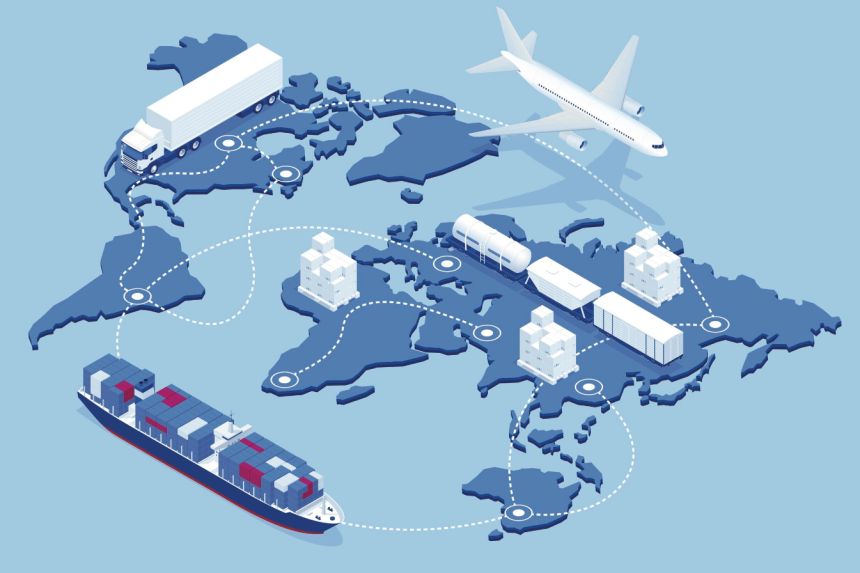Supply chain analytics is the handling of the data generated by the entire production process of a product or service to derive actionable insights. This process includes the optimization of all steps included within the production cycle.
Supply chain management entails connecting a network of suppliers through a centrally managed process starting from the procurement of raw materials to the distribution of the final product to the consumer. Each supplier serves as a link in the manufacturing cycle, from raw material providers and manufacturers to retailers.
Earlier, the supply chain was restricted within a rigid model – from start to end, the production of a product or service had to follow a strict process. However, recent changes have led to an overhaul in supply chain management, that has made it more flexible. Supply chain management had to change to adapt to changing market structure, digital transformation and constantly changing customer preferences.
Importance of Supply Chain Analytics
When supply chain analytics is effectively utilized in the production flow, it can lead to minimized costs, reduced wastage and prominent time saving. The just-in-time supply chain management methodology has become the norm within every industry where retail sales immediately trigger the replenishment of products to the manufacturer.
Improvements in the way the supply chain is managed have helped bring essential products to consumers at lower prices, which has improved the overall living standards for everyone.
Listed below are the reasons why supply chain analytics is important.
- Cost Efficiency – Streamlining the supply chain helps reduce wastage, enhance the allocation of resources and reduce the costs associated with running operations.
- Customer Satisfaction – Supply chain analytics can help bring goods and services to the customer faster than before. When customers receive a timely and correct distribution of goods, it leads to increased satisfaction and loyalty.
- Competitive edge – A supply chain that is properly managed can result in a shorter delivery time, offering enterprises a competitive advantage.
- Risk Prevention – Supply chain analytics detects and tackles potential interruptions and anomalies in order to reduce risks.
Essential characteristics of efficient supply chain analytics
The most evident “face” of the company to the public and its clients is the supply chain. A company’s long-term viability and corporate reputation are better protected the better and more efficient its supply chain management is. An efficient supply chain analytics should have the following characteristics –
- Connectivity – Being connected means having access to both structured and unstructured data from sources like Internet of Things (IoT) as well as more conventional data sets made available through ERP and B2B integration technologies.
- Collaboration: As multi-enterprise interaction and involvement become more important, cloud-based commerce networks are being used to improve collaboration with suppliers.
- Cyber security – The supply chain must protect itself against cyber-attacks attempting to hack into internal systems and this should be a concern throughout the organization.
- AI Enabled – The artificial intelligence (AI) system transforms into the administrator of the contemporary supply chain by gathering, coordinating and managing decisions and actions throughout the chain. The majority of the supply chain processes are automated.
- In-depth analytics – Analytics in the supply chain must scale with data in real-time. The insights that come from real-time data analysis can be more comprehensive and assist in informed decision-making. Latency is unacceptable for the future of supply chain management.
Emerging trends in Supply Chain Analytics
- Machine Learning and Artificial Intelligence – Historical data is often used to make predictions to strategize for the supply chain. Still, machine learning and artificial intelligence will soon take over and change how planning is done. Predictive models powered by AI and ML will revolutionize supply planning as well as processes like demand forecasting. Dynamic pricing will be driven by AI, and the launch of new products will be based on predictive market intelligence. New approaches for managing product promotions and responding to supply chain problems will also be driven by AI and ML.
- Regulatory issues and risks to security – Companies will need to enhance the standards of their security and privacy procedures due to the ongoing possibility of high-profile cyberattacks that could compromise the personal data of millions of customers. Macroeconomic issues, political unpredictability, energy costs and the availability of resources will all necessitate stringent security actions across the enterprise, including in the supply chain. As a result, to prepare for all possible circumstances, supply chain managers will need extensive modeling capabilities.
- Interconnected Supply Chain – As the modern-day supply chain develops, managers are constantly seeking new methods to overcome challenges. When a connected supply chain planning strategy is executed and new technologies are deployed, it leads to more individuals being integrated into the decision-making process. These themes will be crucial to the evolution of supply chain management.
Conclusion
Today’s supply chain analytics is focused on managing data, services and products to optimize every step of the supply chain as opposed to the narrower approach of transportation and pricing of physical goods. Modern supply chain management has to encompass everything from product quality, delivery, customer experience and cost to profitability. Modern supply chains generate massive amounts of data which can be leveraged via supply chain analytics in the future to derive actionable insights to enhance operations even further.















